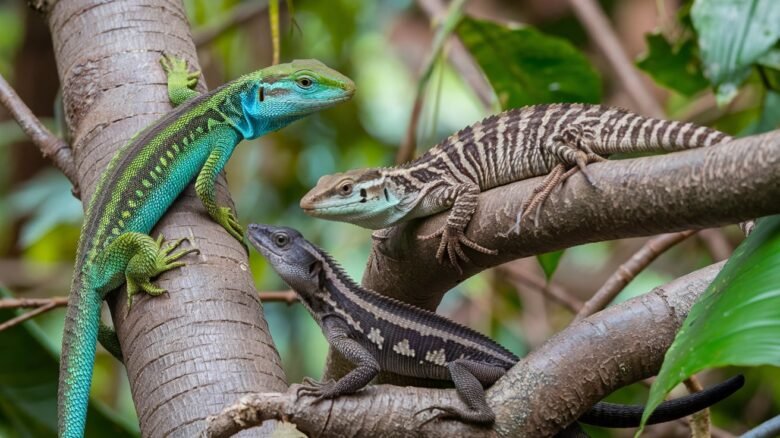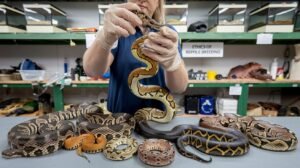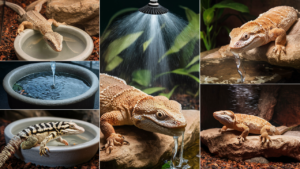Reptiles exhibit fascinating social behaviors, ranging from territoriality to complex interactions within social species. This article delves into the social dynamics of reptiles, the management of multiple reptiles in captivity, and strategies to enhance their social interactions, feeding our understanding of these often-misunderstood creatures.
The Basics of Reptile Social Behavior
Reptile social behavior encompasses a range of interactions, including **territoriality**, where individuals defend specific areas, **communication** through coloration and body postures, and elaborate **mating rituals** that can involve displays and vocalizations. Understanding these behaviors is crucial for effective management both in the wild and in captivity.
Social Species of Reptiles
Certain reptiles exhibit fascinating social behaviors, forming complex structures within their species. For instance, *Ctenosaura pectinata*, the spiny-tailed iguana, showcases cooperative behaviors by basking in groups, which enhances thermoregulation. Additionally, *Gopherus agassizii*, the desert tortoise, displays a unique social structure, often sharing burrows during extreme temperatures, promoting survival. Living in groups provides benefits such as increased protection from predators and improved foraging efficiency, evidenced by communal basking in various lizard species that allows for mutual vigilance, thereby enhancing individual survival rates.
Managing Multiple Reptiles: Best Practices
Managing multiple reptiles in a single habitat requires careful consideration of species compatibility to prevent aggression and stress. Select non-territorial species with similar environmental needs for optimal coexistence.
Ensure sufficient habitat size, providing ample space to avoid competition for resources. Different zones can help establish personal territories while allowing interactions.
Feeding strategies are crucial; separate feeding areas reduce competition and aggression. Monitor feeding times to ensure all reptiles are receiving adequate nutrition without stress.
Behavioral observations are essential in identifying signs of distress or dominance among reptiles. Early intervention can alleviate tensions, fostering a more harmonious environment. Understanding individual personalities will assist in better management.
Enhancing Social Interactions among Reptiles
Enhancing positive social interactions among reptiles requires thoughtful environmental enrichment, focusing on species-appropriate habitats that stimulate natural behaviors. Strategies such as varied hiding spots, climbing structures, and safe social zones promote healthy interactions, reducing stress and aggression.
In multi-reptile environments, understanding social group dynamics is crucial. Observing individual personalities and interaction styles informs strategies for creating harmonious living arrangements. Implementing gradual introductions can minimize territorial disputes and enhance social bonds.
Regularly rotating environmental features, such as substrate and décor, can further enrich habitats, providing mental stimulation and opportunities for exploration. This variety helps relieve boredom and can mitigate aggressive behaviors.
Interventions like creating escape routes or refuges for less dominant individuals enable all reptiles to feel secure. Providing options for both interaction and solitude encourages healthy social dynamics and reduces competition for resources within shared environments.
Integrating routine behavioral assessments into management practices helps identify stress signs early. Tailoring habitats to individual needs fosters a more balanced community, allowing reptiles to interact in ways that fulfill their natural instincts while ensuring overall well-being.
The Future of Reptile Research and Conservation
Future research directions in reptile social behavior must focus on elucidating the intricacies of social structures essential for effective habitat preservation. Understanding these dynamics can significantly aid in implementing targeted conservation strategies that address species recovery and mitigate challenges faced in their natural environments.
Conclusions
In conclusion, recognizing the social behaviors of reptiles allows for improved management and care in captivity. By fostering positive interactions among multiple reptiles, we enhance their well-being and deepen our appreciation for their complexity as social beings. Proper understanding and techniques can lead to healthier, thriving reptile communities.



